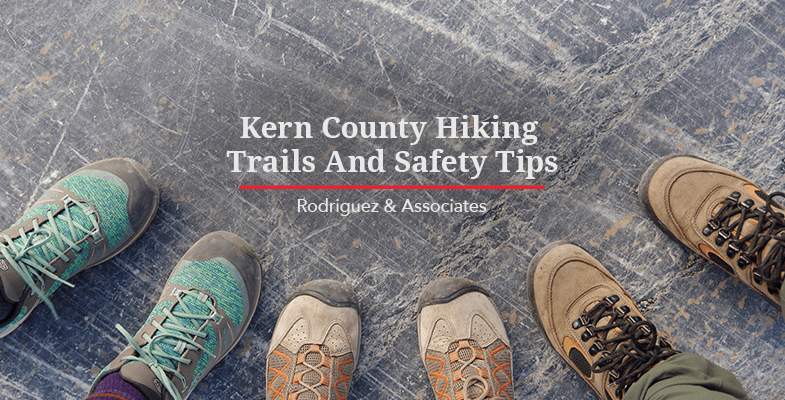From Mt. Pinos to Sunday Peak and everywhere in-between, Bakersfield, and the larger Kern County area, has numerous options for fantastic hiking. Kern County is home to strenuous hikes at high elevation as well as leisurely hikes perfect for families and kids. No matter what kind of hike you are looking for in the area, it’s always important to take necessary safety precautions.
Best Hikes in Kern County
The southern end of the Sierra Nevadas and Sequoia National Park are within Kern County and a short drive from Bakersfield proper. Challenging hikes with stunning views are not too far away. Some of the best within Kern County include:
- Owen’s Peak – At 8,453 feet, it is the tallest mountain in Kern County. The trail is nearly 13 miles roundtrip, and there is more than 3,700 feet of elevation gain. It’s a steep trail as well, so be prepared.
- Wind Wolves Preserve Trail – This trail is just shy of eight miles round trip, and even features a waterfall. Dogs are allowed as well.
- Hart Park Trail – Replete with picnic tables, grills and boat rentals, this two mile loop trail circuits Kern River, and is perfect for an afternoon jog or leisurely stroll with your pooch.
- Piute Peak – This prominent peak is 8,440 feet, and the road to the trailhead can be rocky at points but offers beautiful scenery and the chance to see wildlife.
- Badger Gap and Little Tenant Spring Trails – This is accessible year-round, allows dogs and is a little less than 10 miles roundtrip.
- Tecuya Mountain – This peak lies on the southern end of Kern County, and is about 7,160 feet tall. At a little less than five miles round trip, it’s a short but moderately steep hike.
There are many more in Kern County, particularly near Fort Tejon State Historic Park and Sequoia National Forest. Find what suits your abilities and enjoy yourself.
Kern County Hiking Safety Tips
Given the hot temperatures of Central California and the high winds that can accompany them, it’s important to be prepared when going on a hike that will last more than a couple hours. Water and food are obvious necessities; dehydration starts as mildly as a headache, but if left untreated can manifest into confusion and disorientation. In the California sun, a lack of water can prove fatal.
If you feel dehydration coming on or notice these symptoms in someone else, stop moving and drink water until they feel better, or if no water is available, turn around and go home immediately. Other provisions such as these are recommended:
- A cell phone is important, but can lose battery. Have a trail map and/or a compass just in case.
- Extra clothing in case of weather changes.
- Keep an eye on the weather. The worst place to be during a storm is on an exposed trail or ridge.
- For longer hikes or those that cross streams, rivers and snow, an extra pair of dry socks will help you avoid blisters.
- Sunscreen. Even on cloudy or cool days, the trails of Central California often do not supply sufficient shade.
- It can’t be stressed enough; bring 1-2 liters of water to stay properly hydrated.
It’s vital to tell someone where you are going, just in case of emergency. The worst thing that could happen, on top of being lost, is no one knowing where to look for you. Some common injuries that can occur on a hike:
- Blisters – Hiking with these is more than a nuisance; it can make it impossible. Dry socks are crucial.
- Sunburn – The sun is harsh at high, dry altitudes, so sunscreen is important for minimizing the skin’s exposure to UV rays.
- Bug bites – These are particularly common if hiking in wooded areas. Bring spray if you know they’ll be present.
- Twisted ankle – Good footwear provides comfortable and even support will help prevent this, even if you encounter slippery rock or muddy ground.
- Exhaustion – This usually comes with similar symptoms as dehydration, and greatly increases the likelihood of getting lost.
A hike is a great avenue for exercise and exploration, but being properly prepared will prevent injuries, dehydration and getting lost. Take your time, know when to turn around, stay with the group and the experience that much more enjoyable.
